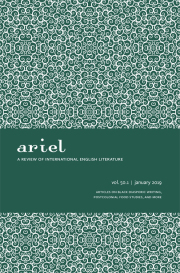"From a Distant Witness" in Rome and London: Black Atlantic Temporalities in William Demby's <i>Beetlecreek</i> and George Lamming’s <i>In the Castle of My Skin</i>
Keywords:
Demby, William, Lamming, George, Black Atlantic, expatriate literature, Transnationalism, Temporal turnAbstract
This comparative analysis explores the formal methods with which two young black expatriate authors fictionalized their youth spent in segregated homelands in the Global South. Focusing on two modernist works of Cold War-era Black Atlantic fiction, William Demby’s Beetlecreek (1950) and George Lamming’s In the Castle of My Skin (1953), the article examines the authors’ respective exilic positions in Rome and London and their choice to pen debut, semi-autobiographical coming-of-age novels set in the 1930s with existential undertones—Demby’s in a small segregated town in the US South and Lamming’s in a small colonial village in the Caribbean. Demby and Lamming use aesthetic modes of defamiliarization as a liberatory strategy, adopting modernist formal and temporal strategies to estrange structures of oppression. The essay argues for reading the authors’ novels beyond national and canonical boundaries as part of a larger body of Black Atlantic literature that deconstructs racialized regimes in the Global South. I conclude with a brief reading of each writer’s intersections with Langston Hughes and Richard Wright in New York and in Paris in 1956, positing mobile networks of black diasporic affiliation forged in a period of global flux and transformation.
Downloads
Downloads
Additional Files
- 'From a Distant Witness': Black Atlantic Temporalities in William Demby's Beetlecreek (1950) and George Lamming's In the Castle of My Skin (1953)
- Cover letter
- ‘From a Distant Witness’: Black Atlantic Temporalities in William Demby’s Beetlecreek (1950) and George Lamming’s In the Castle of My Skin (1953) (April 2018 draft)
- From A Distant Witness (May 2018 draft)


